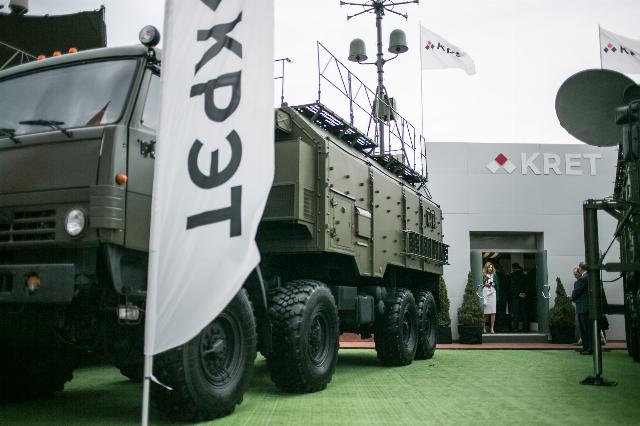Concern Radioelectronic Technologies (KRET), which celebrated its 15th anniversary this year, is the country's largest manufacturer of electronic warfare (EW) equipment. These are about 70 enterprises throughout Russia, many of which develop and produce electronic warfare equipment.
"Khibiny" on board fighters, "Vitebsk" to protect helicopters, a ground-based "jammer" "Krasukha", "Mercury" on a tracked platform, "Lever" based on Mi–8, sea-based equipment - all these are KRET developments. Some of them became the heroes of the two-part issue of the project "Military Acceptance" of the Zvezda TV channel, released on the anniversary of the concern.
About aviation and ground−based electronic warfare equipment manufactured by the Concern Radioelectronic Technologies of the Rostec State Corporation - in our material.
KRET is on guard of the ether
The Soviet Union was actively engaged in the topic of electronic warfare and achieved considerable success in this. But in the 1990s, for some reason, they decided that electronic warfare was an expensive and not very necessary toy. Suffice it to say that during the conflict in the North Caucasus, electronic warfare equipment was not on any of our aircraft.
According to Alexander Pan, Director General of KRET, our state began to invest seriously in the topic of electronic warfare after 2008. In February 2009, a decision was made at the state level to create the Radioelectronic Technologies Concern. His main task at the first stage was the development of new protection systems for aviation. Now they are saving the lives of our pilots in the zone of a special military operation.
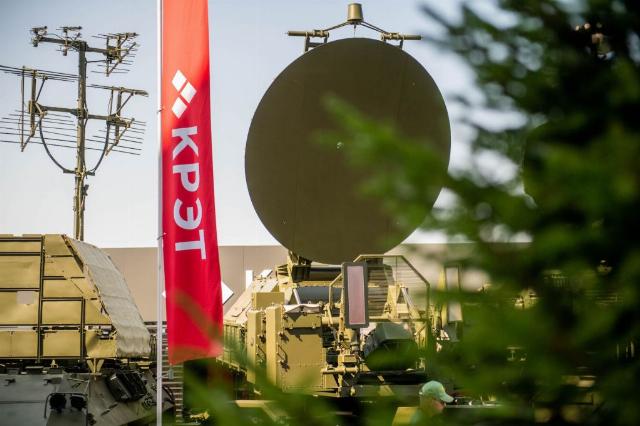
Photo: Alexander Utkin
Electronic warfare, like any equipment, changes according to the results of its operation, said the CEO of KRET: "We take into account the experience that we receive. We are refining each complex. According to the results of our work, we have already carried out at least a hundred improvements." As a result of this experience, a picture of the complexes of the next generations is being formed. According to Alexander Pan, the concern's specialists in electronic warfare are regularly present in the EW zone.
"Khibiny": Like behind a stone wall
Khibiny is not only the largest mountains on the Kola Peninsula, but also a powerful means of electronic protection for Russian fighters. The complex is manufactured at the Stavropol radio plant "Signal" as part of KRET.
The Khibiny were adopted in the 2000s, but work on them began back in Soviet times. Then the collapse of the Soviet Union and the subsequent rupture of production chains prevented them from being completed.
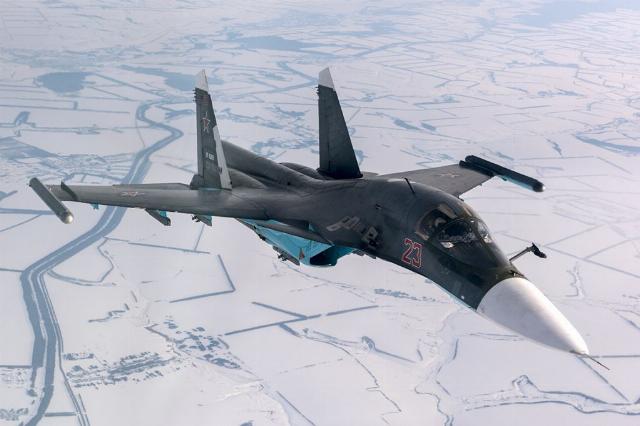
Su-34 with external "Khibiny" modules on the wingtips. Photo: Russian Ministry of Defense
The principle of operation of Khibiny is as follows. There are receiving and transmitting containers. The receiving container receives a signal from the enemy's radar station, processes it and transmits it to the modules of the cabin space. And the transmitting container distorts these signals. Next, there are two scenarios: either the enemy cannot catch the target, because the coordinates of the target are distorted, or when the enemy's missile is already launched, it is diverted from the target.
Today, Su-34, Su-35 and other fighters are equipped with various modifications of the Khibiny. According to Alexander Pan, all aircraft in the CBO zone, without exception, are equipped with electronic warfare equipment today.
Vitebsk vs Stinger
The Zvezda TV channel showed impressive tests of the protection of the Mi-8 helicopter, which was fired at with Igla MANPADS. The missiles aimed at the target, at a great distance, suddenly abruptly went to the side, not reaching the helicopter. A total of 20 missiles were fired, and all of them did not reach the target. This was how the operation of the Vitebsk first-generation electronic protection system was demonstrated. Today, next-generation systems are already being supplied to the troops.
A complex has been developed in Samara, at the Ekran Research Institute as part of KRET. They are equipped with Su-25 attack aircraft, Ka-52 Alligator attack helicopters, and Mi-8 helicopters.
Vitebsk is not a single device, but a whole system of electronic equipment installed on an aircraft in different places. The electronic warfare system of an aircraft can be divided into two parts. This is an electronic suppression system and an optoelectronic suppression system. Electronic jamming works on radar missile guidance heads, and the optoelectronic suppression system works on thermal heads.
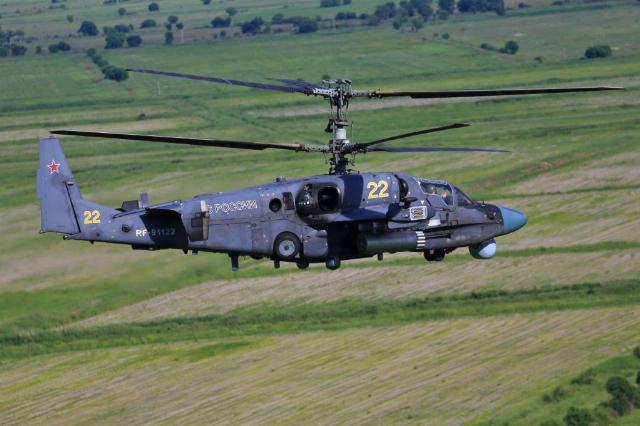
Ka-52 with elements of the optical-electronic complex "Vitebsk". Photo: Fedor Leukhin / wikimedia.org
Vitebsk systems, which were nicknamed "eggs of life" by the light hand of the pilots, are optical−electronic suppression systems, and the radio-electronic system consists of several elements. Depending on the technical specification, one or both of these systems may be installed on the aircraft.
The first task of all electronic warfare systems is to prevent the launch of a missile by the enemy. To do this, the radar is interfered with in such a way that the enemy's radar system cannot target the target. If the launch did occur, then the system works on the rocket.
In the new generation Vitebsk, a mirror scanner inside a transparent ball should "see" the working rocket engine, and the "brain" of the complex should recognize the coordinates of the target and its direction. After recognition through the control system, a command is formed to track the target, and the scanner begins to track the target. As soon as the specified tracking accuracy is achieved, the suppression laser is turned on, and as a result, the missile flies away to a false target.
Electronic warfare systems protect against MANPADS such as Igla, Stinger and others, work both on air-to-air missiles with radar guidance and on missiles launched from the ground.
"Krasukha": hallucinations for the enemy
Krasukha, belladonna, rabid berry – all these are the names of one plant, the fruits of which, when consumed, can cause a person to become disoriented in space and even hallucinations. The Krasukha complex, developed at one of the KRET enterprises, acts in a similar way on enemy equipment, stupefying its radar with its interference. The tests of the complex were completed in 2013, and today it is actively used in the course of its development.
The essence of Krasukha's work lies in the fact that it detects aircraft locators at a long range − 200-250 km. Once a target is detected, it is recognized, priorities are selected, and then a decision is made to suppress the target.
For example, the enemy's strike aircraft is going to launch a raid on our territory. The area of attack is already protected by two vehicles of the complex. One is a transceiver, it detects and recognizes signals from enemy radars. The other, a jamming station control machine, begins electronic suppression of the enemy's radar. Without the impact of the "Beauty", the pilot of the enemy aircraft sees the situation around him, sees targets for destruction, recognizes them, including ground targets that he needs for aiming. After exposure, he loses all this environment and, as a result, cannot complete the task.
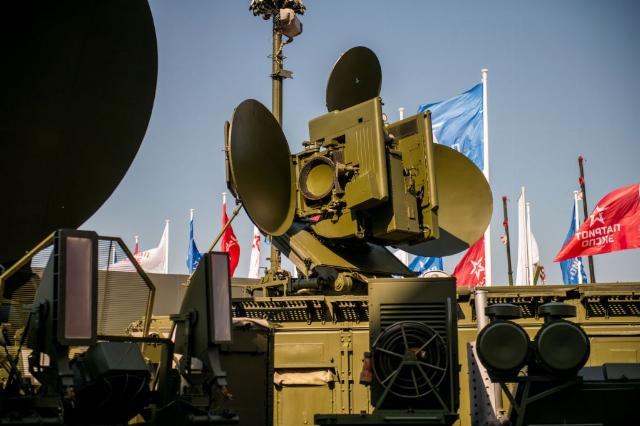
Photo: Alexander Utkin
At the same time, Krasukha does not harm its aviation. The complex works in a single control loop, so it has priorities, goals, and an understanding of who is one's own and who is someone else's. You can jam with a wide front, actually closing an entire area for flights, or you can work with a targeted, narrow beam for specific purposes.
The key detail of the Krasukha is an antenna device, which consists of 12 evenly spaced horns around the circumference. It provides instant target detection, transmits information to the operator, who, in turn, captures the target and turns on the suppression mode.
If a group of targets appears in front of the "Beauty", then there are three possible scenarios for choosing an object to suppress. The operator can make a decision manually, or the station itself automatically according to pre-programmed algorithms, or the target is selected according to instructions from an external command center. The complex allows you to create radio interference in a wide frequency range, while neither the speed nor the altitude of the enemy aircraft does not matter.
Krasukha has been produced for more than ten years, and in 2021 the potential laid down by the developer was fully realized. Its functionality has been expanded, and it has become possible to suppress not only existing targets, but also new promising developments of a potential enemy.
